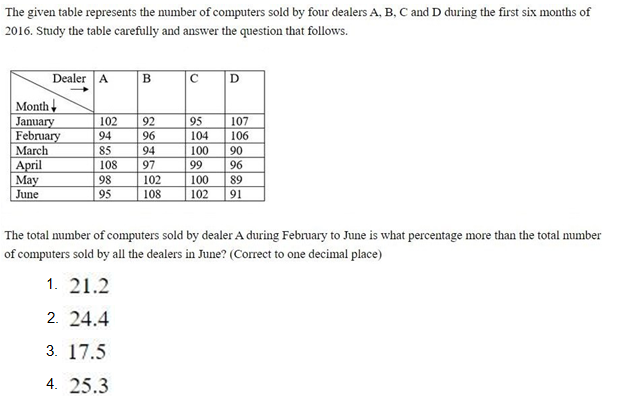Question
M and N, working in tandem, can successfully attain the
sales target within a span of 15 days. Now, if N's efficiency is _______ percent less than that of M, what is the duration _______ in days that N, working alone, requires to accomplish the sales target? Which set of values from the options provided will correctly complete the statement to render it accurate? i) 25, 35 ii) 50, 45 ii) 40, 40Solution
ATQ, Let the efficiency of M be ‘20m’ units/day For i: Efficiency of N = 20m × 0.75 = ‘15m’ units/day Total amount of work = (20m + 15m) × 15 = ‘525m’ units Time taken by N alone to complete the whole work = 525m ÷ 15m = 35 days Therefore, (i) is true. For ii: Efficiency of N = 20m × 0.50 = ‘10m’ units/day Total amount of work = (20m + 10m) × 15 = ‘450m’ units Time taken by N alone to complete the whole work = 450m ÷ 10m = 45 days Therefore, (ii) is true. For iii: Efficiency of N = 20m × 0.60 = ‘12m’ units/day Total amount of work = (20m + 12m) × 15 = ‘480m’ units Time taken by N alone to complete the whole work = 480m ÷ 12m = 40 days Therefore, (iii) is true.
The number of students passed in college A is what percent (approximately) the number of student passed in college C? (During all the given year)
Find the ratio between the number of children visiting Buxa Tiger Reserve and Betla National Park together.
What is the average number of women visiting all the Parks together?
The total number of children visiting Kanha National Park is approximately what percent of number of children visiting Indravati National Park?
What was the ratio of the total number of students passed and failed in college C (during all the given years?

If the number of cars produced by Company P increased by 20% in 2023 compared to 2022, how many cars would be produced by Company P in 2023?
In 2021, what is the difference between the number of cars exported by Company P and Company R ?
What is the difference between the total number of orders who were not delivered by Jabong and Myntra together and that of who were not delivered by Fl...
What is the approximate average number of students failed in college C in during all the given year?
Relevant for Exams:


